Sai Bat, or Morning Alms, is a traditional ceremony practised in Luang Prabang every morning. Monks will walk down the streets accepting offerings of food from both locals and visitors. We wanted to see this small aspect of the culture, so we pulled ourselves out of bed at 4am and made our way to Wat Xiengthong.
Giving alms is an essential practice in Theravāda Buddhism because it embodies two key Buddhist principles: dāna (generosity) and renunciation (detachment from material possessions). The idea is that monks depend on alms for sustenance, while laypeople gain spiritual merit through their generosity.
If we had any doubt we were in the right place it was quickly put to rest by the lines of plastic chairs that lined the streets. People were already preparing for the monks to walk and give out alms. As we got closer to the temple where it would start, we passed by a couple of signs informing tourists how to respect the ceremony. Signs also listed the standardised prices for the food, an effort by local government to prevent tourists being overcharged.
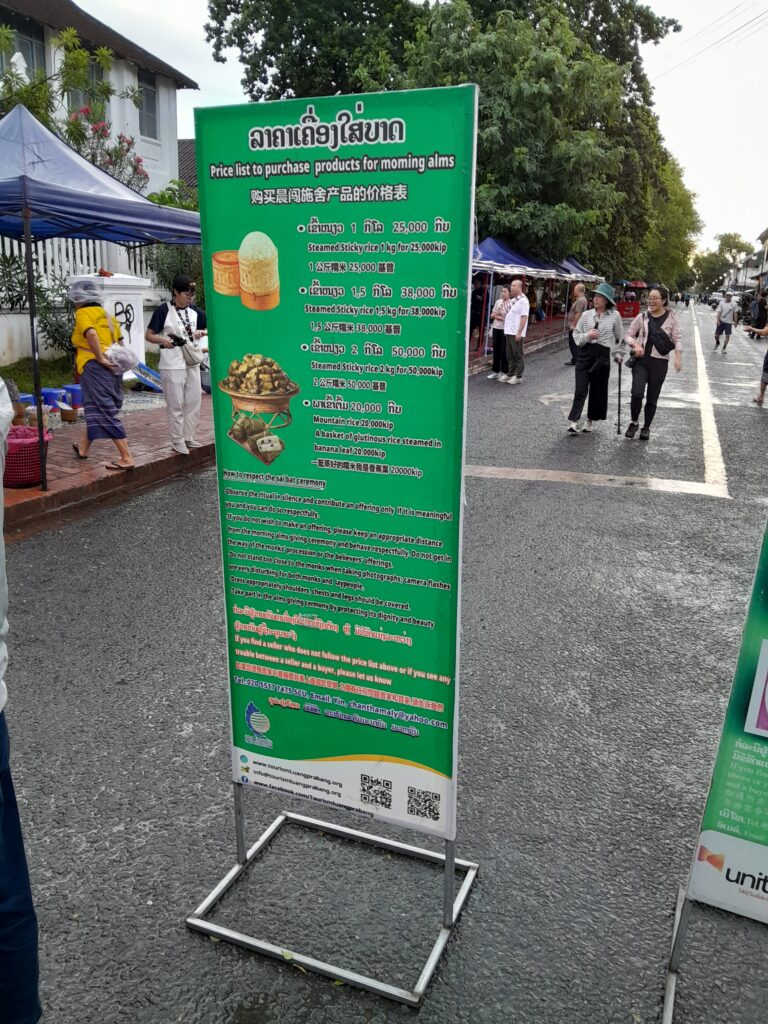
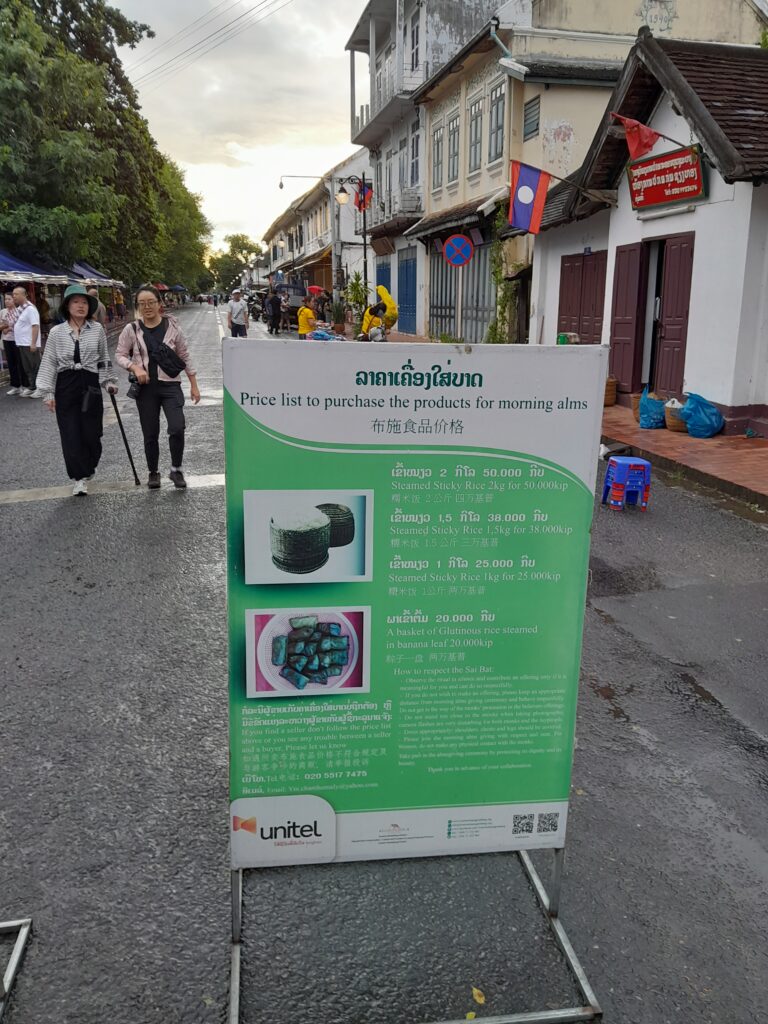
Before tourists gather here, many of the locals gather with prepared food to sell. Most of the vendors would sell sticky rice and Oreos. It struck me that this wasn’t the healthiest of diets, and I wondered if this is all the food the monks would eat. Later I would read stories of the young monks going to bed hungry, as they relied on these alms for their food for the day.
Tour groups started to show up, with guides explaining the ceremony and how it works. I have seen these tours advertised in various hotels and hostels, and they don’t seem worth it. You can show up any morning, and buy food directly from the locals if you want to participate. Despite the signs on the street, there are still those who have figured out how to overcharge tourists.
As the sun rose the monks would start coming out of the temples. A procession of orange-robed men walking in single-file. You aren’t supposed to touch the monks, which includes placing food in their hands, so each monk carried a basket where food could be placed.
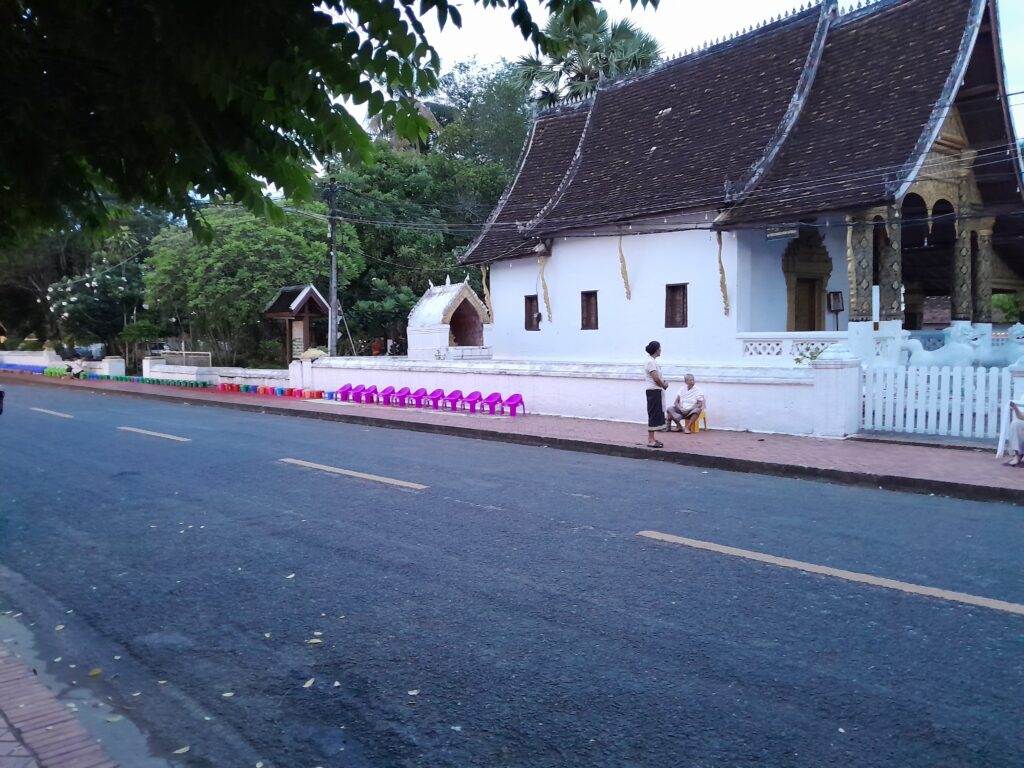
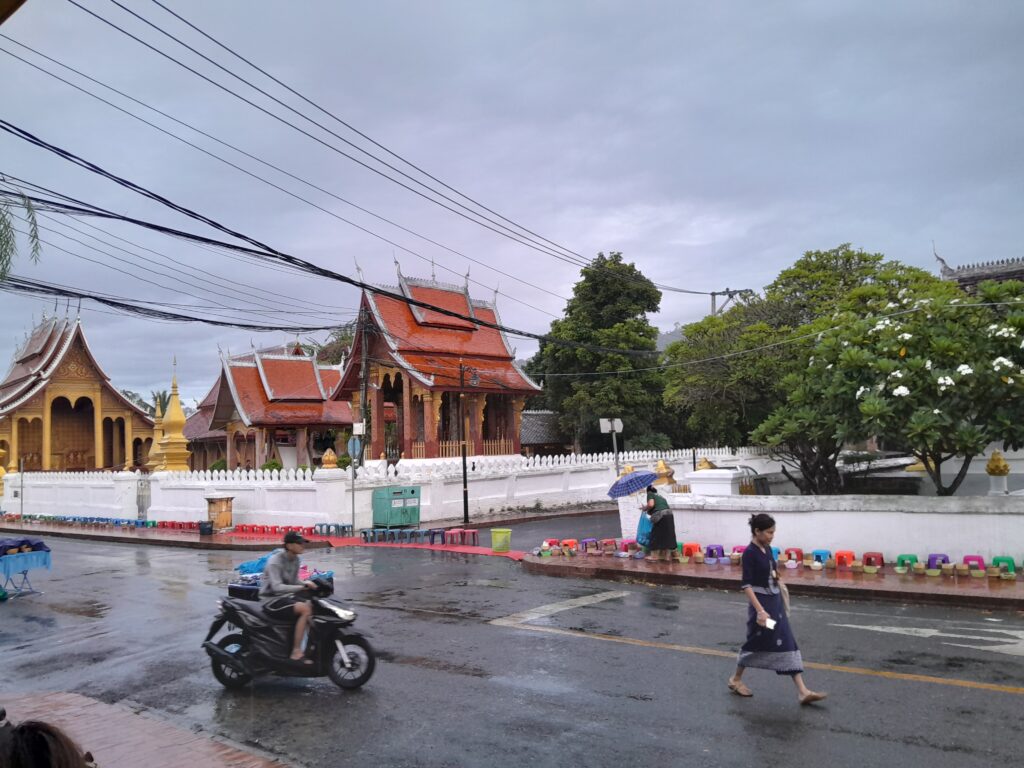
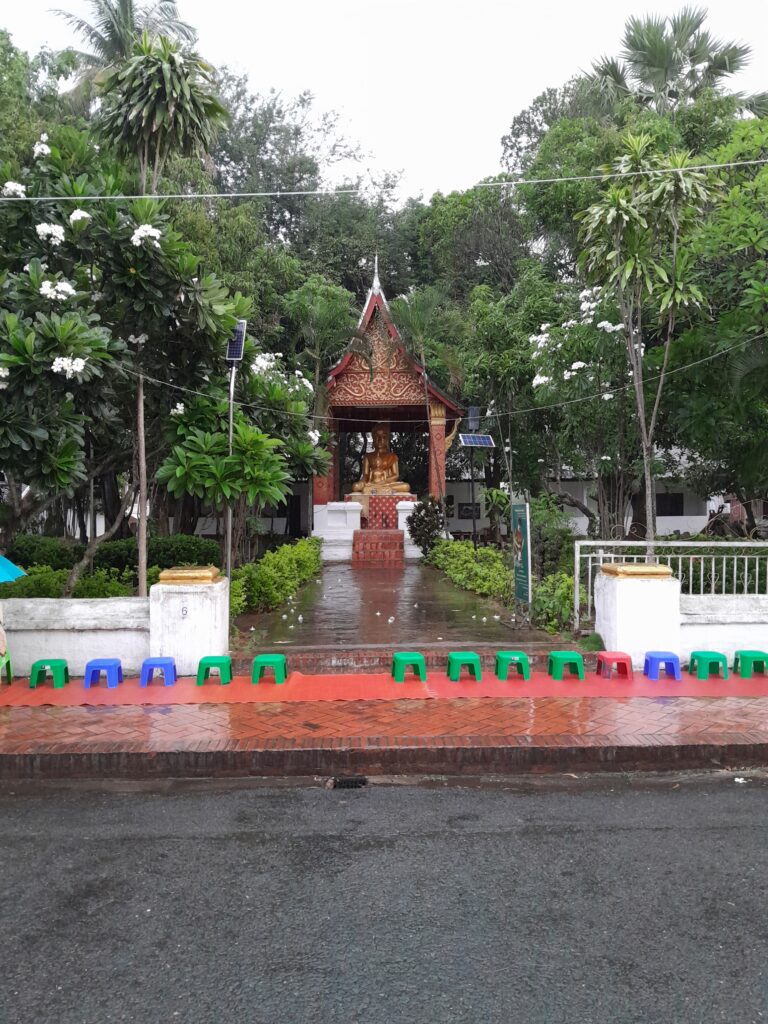
Most of the monks were young children. The temples in Laos take in children from poorer areas and provide them with an education. It’s a way out of poverty for many, and many in Laos were monks during their childhood.
We followed the procession as we observed locals and tourists donating food. The turnout for alms-givers seemed small, certainly a lot less than the number of chairs that had been placed out. I imagine they would have good days and bad days, and this is the reason they would sometimes go hungry. Given that tourists outnumbered the locals, I wondered how much they rely on tourism for food donations.
It started raining heavily as we walked down the road, so many of us took shelter in a nearby building while others reached for their umbrellas. The monks continued their procession, ignoring the downpour. When the rain settled we followed the monks as they returned to their temples to start their day. On their way some of them would donate part of their alms to the homeless waiting for them at the end of the street.
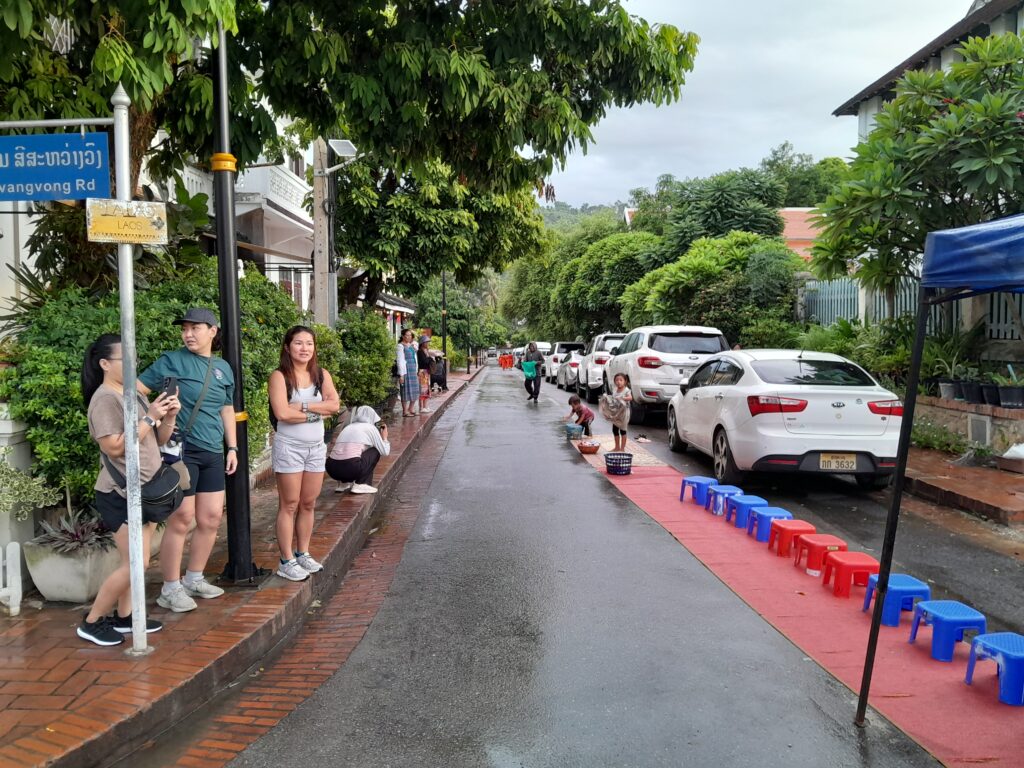
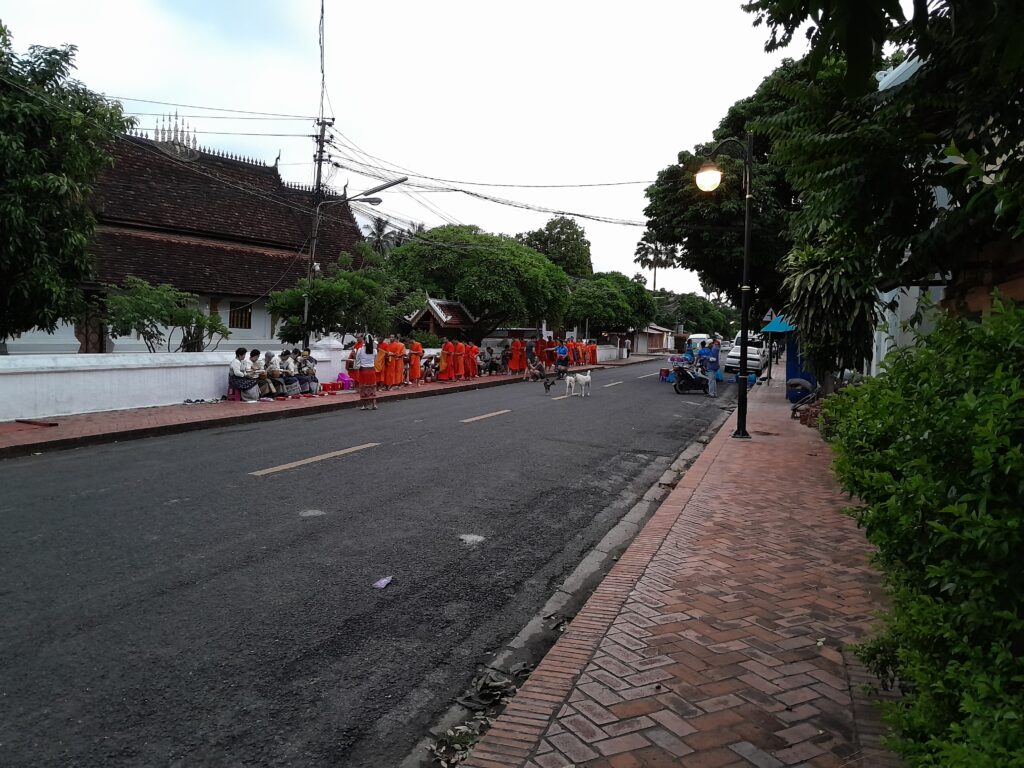
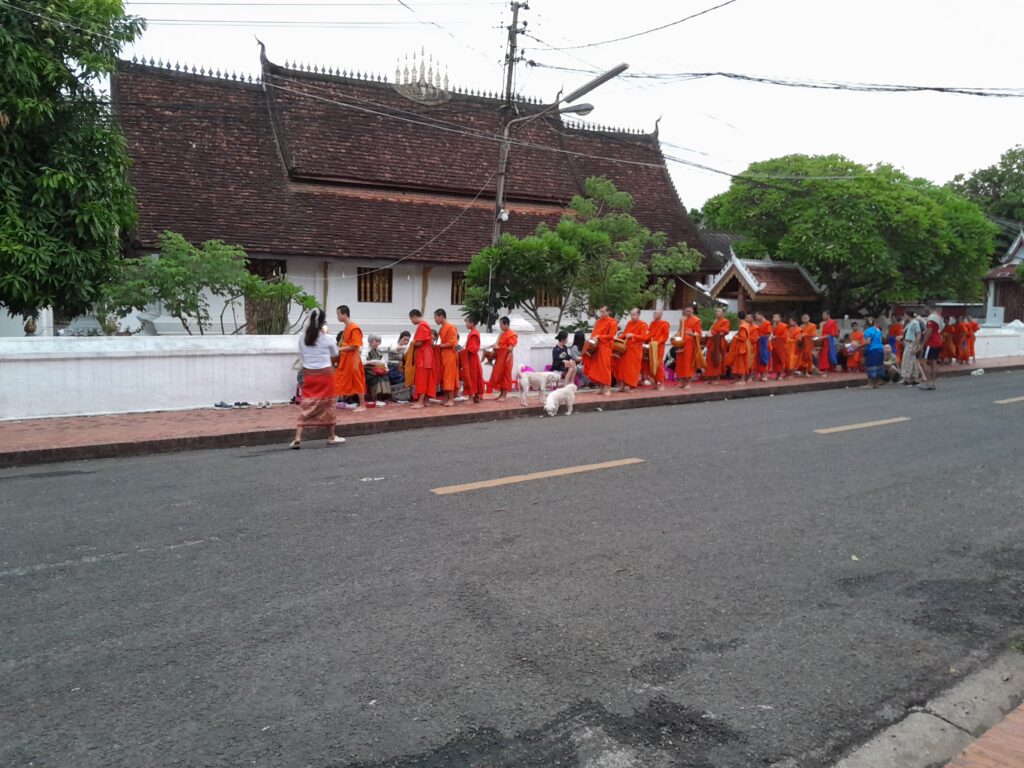
Witnessing the procession gave me much to reflect on. Having given up earthly possessions, monks depend entirely on alms, but this dependency raises questions for me. It feels like they are expecting others to feed them when they have chosen not to feed themselves. They are supposed to gain “spiritual merit”, but what is that in its tangible form?
It’s supposed to be a way for monks to be able to focus on studying and meditation, so they can provide spiritual guidance to others. But if they remove themselves from the real world like this, doesn’t that mean that they lack the knowledge to give guidance? If wisdom is meant to be applied, how can they offer meaningful advice without firsthand experience of the struggles laypeople actually face?
It’s supposed to be an exercise in removing ego, but isn’t claiming to know more about something they can’t have knowledge of the very definition of egotistical?
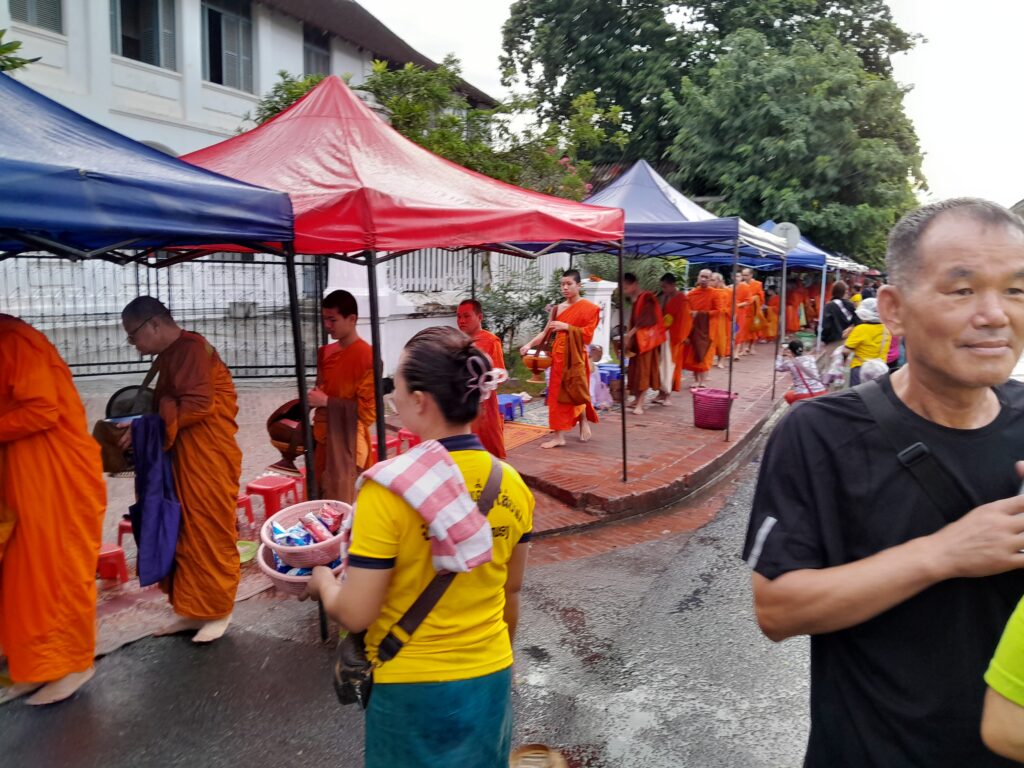
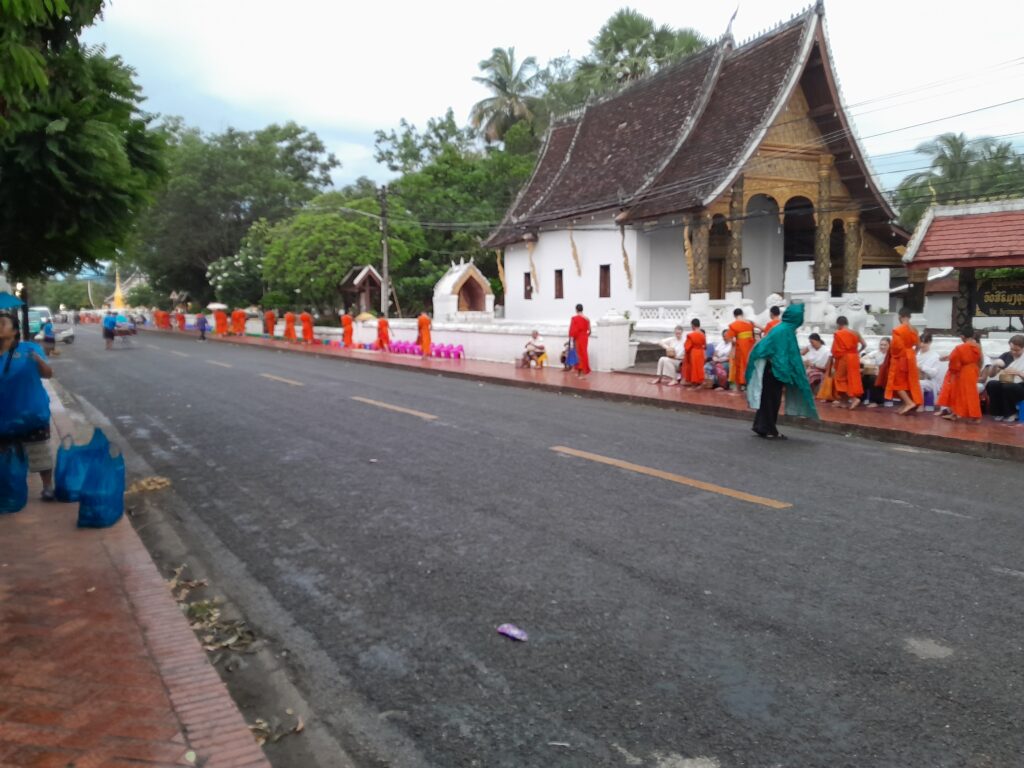
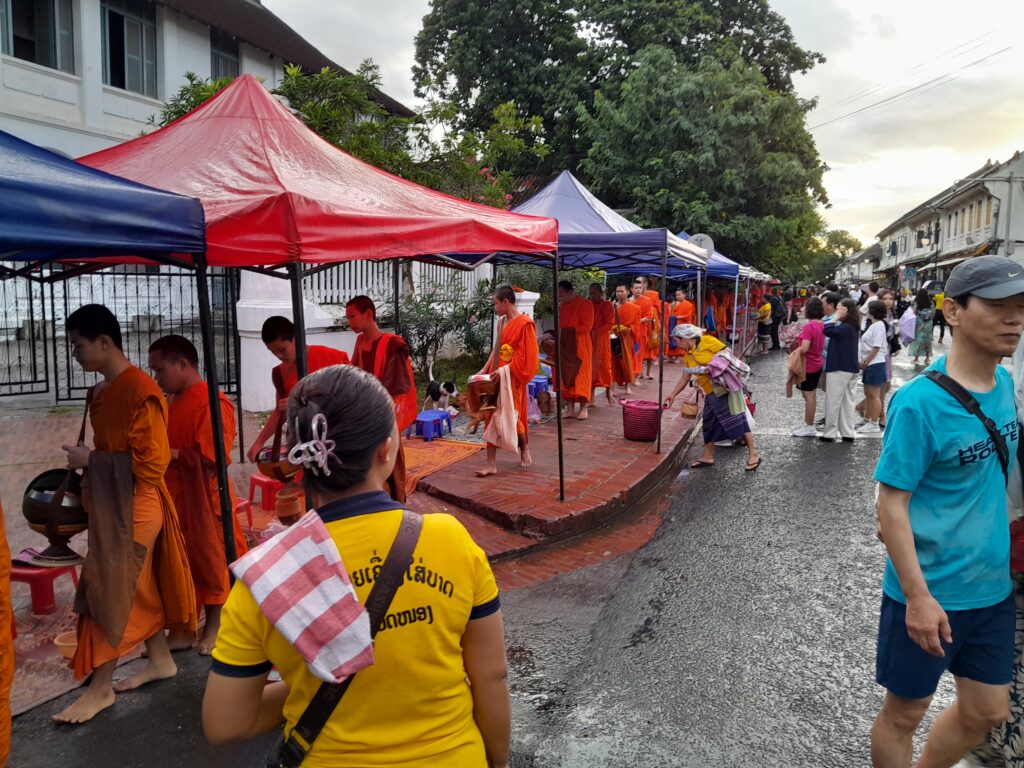
They do take children in and give them an education, which cannot be denied as a good thing. Many children rely on this education later in life, so you could view the donations as going toward this education, and to the country’s future. Still, though adult monks may have chosen to rely on donations to feed themselves, the children they take in didn’t. If children end up going hungry because of this, doesn’t that undermine the supposed moral foundation of their practice?
Many people write about Sai Bat, saying it is great to witness such an ancient tradition. But from what I saw it’s become something else. The locals make the food, and some do donate, but many are there to sell the alms to tourists so they can give an offering. Hotels and hostels will sell the tours, providing another source of income for local businesses.
What was once a spiritual practice now feels more like a performance for tourists.




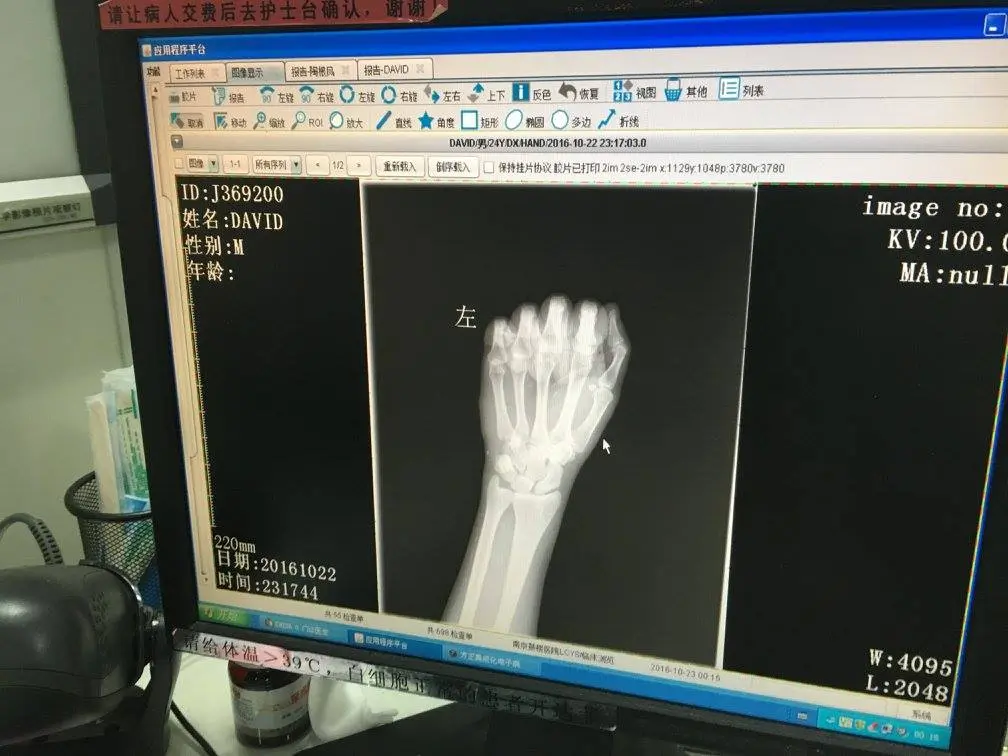
One thought on “Morning Alms Giving Ceremony”
Comments are closed.